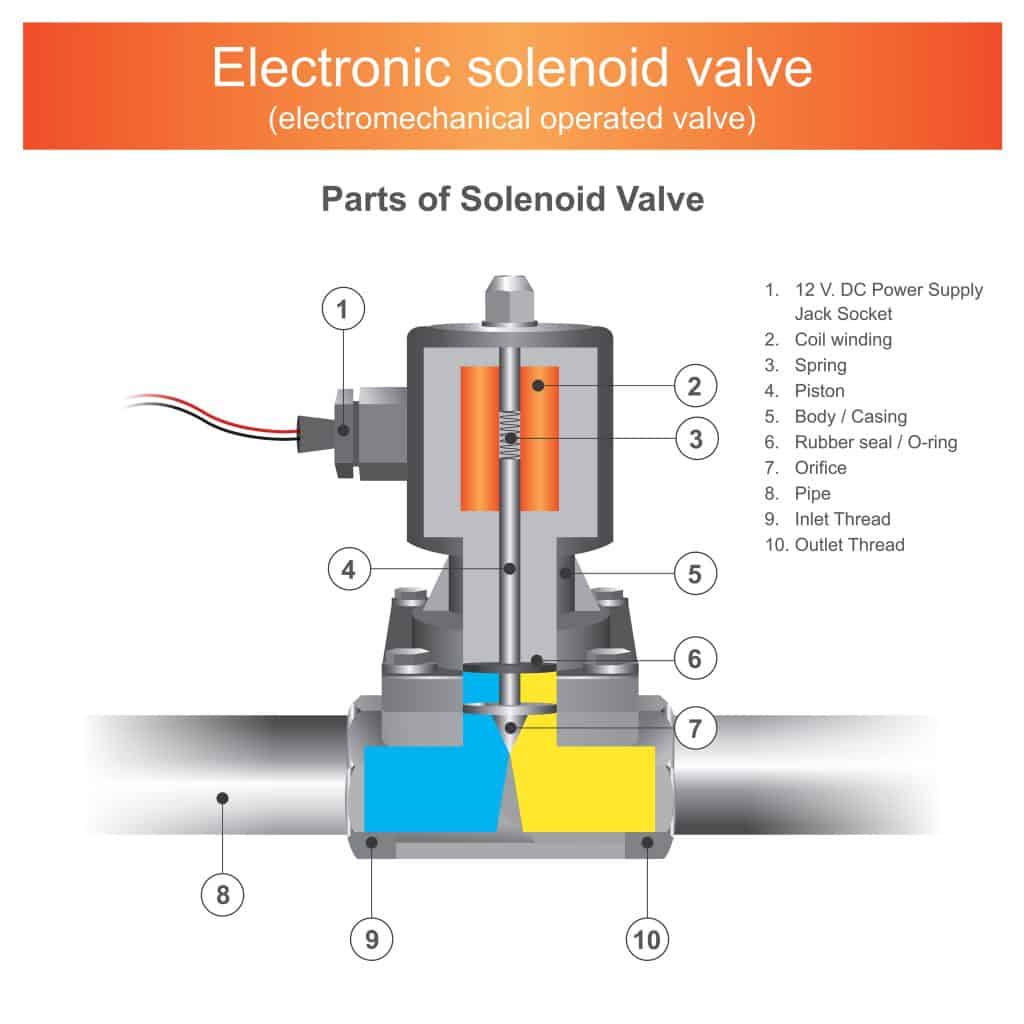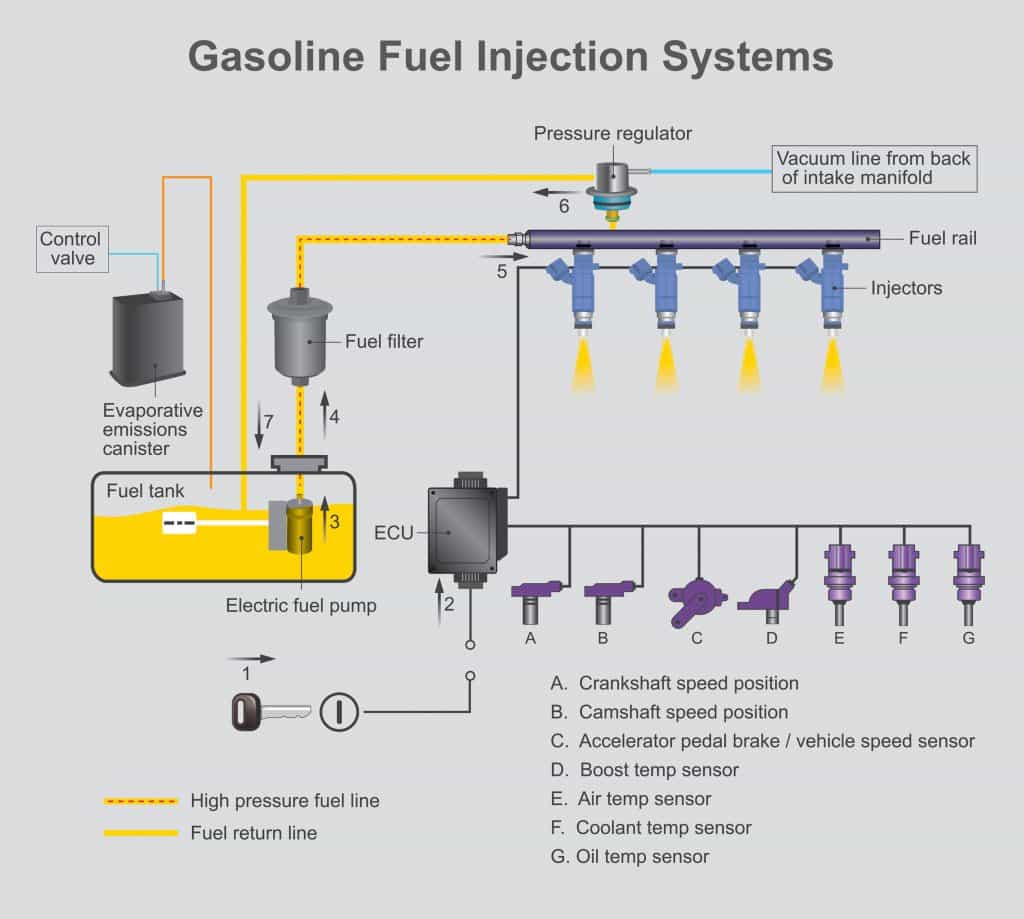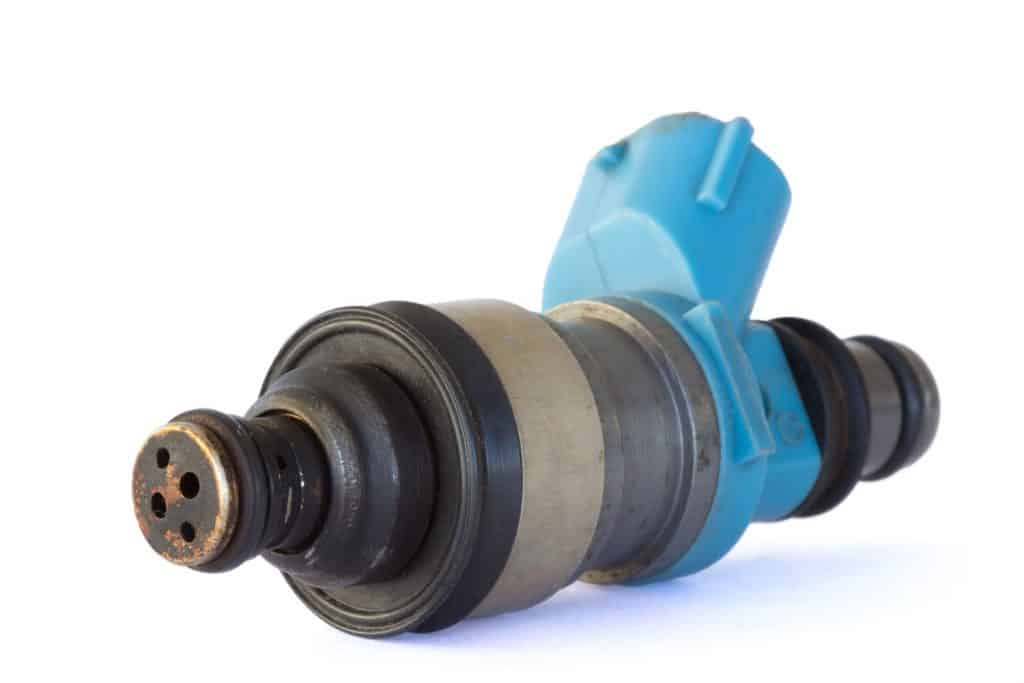If you have noticed lately that your vehicle's gas mileage is decreasing, its engine is idling roughly, or its acceleration is slower than usual, it may have a faulty fuel injector. Replacing a bad fuel injector is a task that many DIYers can do with relative ease. But, when it comes to connecting the fuel injector's plug to the socket in the wiring harness, you may notice that neither the wiring harness nor the new fuel injector specifies positive and negative electric charge. So, how do you know if your fuel injector has negative and positive polarity? We've done the research, and we have the answers for you!
A fuel injector's wiring is not dependent on polarity. As long as one prong of the wiring plug is connected to the positive terminal of the wiring harness and the other is connected to the harness's negatively charged terminal, the fuel injector will function appropriately.
In the remainder of this article, we'll describe how fuel injectors are wired and why they are not sensitive to polarity. We'll also explain whether you can wire fuel injectors "backward." We will show you three ways to test your fuel injectors to determine whether one of them is malfunctioning. And we'll reveal the range of impedances and voltages typically found in fuel injectors. Keep reading to learn more!
![A mechanic holding a fuel injector of an engine, Do Fuel Injectors Have Polarity? [Negative And Positive]](https://vehq.com/wp-content/uploads/2021/07/Do-Fuel-Injectors-Have-Polarity-Negative-And-Positive-683x1024.png)
Do Fuel Injectors Have Polarity?
Fuel injectors do not have negative/positive polarity. They are solenoid valves, which are polarity-insensitive. "Solenoid" is a generic term that describes a coil of wire that generates a magnetic field when electrical current runs through it. This magnetic energy is transformed to linear motion: for example, it causes a piston to move or a valve to open or close.

How Does A Solenoid Fuel Injector Work?
In a vehicle's fuel system, gas (or diesel) travels via fuel lines from the gas tank, through the fuel filter, and into the fuel injectors. There is one fuel injector for each cylinder in the engine. Each fuel injector includes a nozzle with tiny holes through which fuel sprays into the cylinder, where it is combusted.
Within the fuel injector is a coil of wire that serves as a magnet. The vehicle's ECU (primary computer) sends an electric current through the wiring in the fuel injector harness. Each fuel injector has an electrical plug that connects to a socket in the wiring harness.

As electrical current travels through the wiring harness and the plug's wiring and then into the coil, a magnetic field is created inside the plastic housing of the fuel injector. This magnetic field causes the injector's valve to open, allowing fuel to spray into the cylinder's combustion chamber. When the ECU stops the flow of electrical current, the magnetic field collapses, and the fuel injector's valve closes.
Can You Wire Injectors Backward?
In some cases, the wiring harness is marked with a "+" and "-" to indicate positive and negative polarity. However, the fuel injectors themselves are not subject to positive and negative polarity. As long as one prong on the injector's plug is connected with the wiring harness's positive terminal and the other with the harness's negatively charged (ground) wire, electrical current will reach the magnetic coil, and the injector will function properly.
How Can You Tell Which Fuel Injector Is Bad?
If your vehicle is exhibiting the telltale signs of a bad fuel injector -- lower gas mileage, rough idling, stumbling on acceleration -- you may want to test your fuel injectors to identify which one is malfunctioning. There are three easy diagnostic tests you can run:
- The Click Test, to determine whether any of your fuel injectors are clogged
- The Impedance Test, to check the internal wiring of your fuel injectors
- The Voltage Test ensures that all of the injectors are getting the right amount of electrical charge from the engine
We'll provide step-by-step instructions for each test below. Before performing any of them, make sure to don gloves and protective eyewear.
Click Test
One of the most common problems with fuel injectors is the clogging of the tiny openings in the nozzle. Although essentially all impurities are removed from fuel during its processing, and the fuel filter screens out most others, it is still possible for tiny particles to build up and clog the nozzle. When this occurs, the fuel injector will spray less fuel, or none at all, into the combustion chamber.
To determine whether a fuel injector is clogged -- and, if so, which one -- you can perform a simple test using a long-handled screwdriver to "listen" to each injector. Here's how:
- To avoid burning yourself, don't start this test until your car engine is cool.
- Turn the engine on.
- Put the car in "Park," engage the parking brake, and let the engine idle.
- Open the hood and secure it in the raised position.
- Locate the fuel injectors within the engine compartment (if you're unsure what they look like, use the diagram in your Owner's Manual to identify them).
- Place the tip of a long metal screwdriver against the first fuel injector.
- Put your ear to the end of the screwdriver's handle, and listen for clicking noises.
- If you hear a rhythmic clicking, it means the fuel injector valve is opening and closing as it should.
- If you hear no clicking, the injector is probably clogged, and you should clean or replace it.
- Repeat this procedure on each fuel injector in your car's engine. Take note of any injectors that need work.
Click here for a long metal screwdriver on Amazon.
Impedance Test
Another potential issue with fuel injectors is that they may have faulty internal wiring. You can test for this by measuring the impedance of each injector.
- Make certain the vehicle's engine is cool; hot fuel injectors will give faulty readings on this test.
- Leave the engine off, but turn the key to the "ignition" setting. (The car will not start, but the radio, air conditioning, and other features can turn on.)
- Open the vehicle's hood, and secure it in the raised position.
- Locate the fuel injectors and their wiring harness. (If you don't know where they are, use the engine diagram in your Owner's Manual to identify them.)
- Unplug each fuel injector from the wiring harness. This will expose the 2-pronged electrical connectors on the fuel injectors.
- Set your Digital Volt-Ohm Meter (DVOM) to measure ohms.
- Touch one of the DVOM lead wires to a prong on the first fuel injector's electrical connector.
- Touch the second DVOM lead wire to the other prong on the injector's electrical connector. Do not let the DVOM lead wires touch each other.
- Record the DVOM's ohm reading.
- Repeat steps 7 - 9 for each of your vehicle's fuel injectors.
- All of the injectors' readings should be within 0.5 ohms of each other. Replace any fuel injector with a reading markedly lower than the others.

How Many Ohms Should A Fuel Injector Have?
Most cars built in recent years include high-impedance fuel injectors, with impedance ranging from 12 - 17 ohms, depending on the make and model of the car. Larger vehicles and cars with high-performance engines use low-impedance fuel injectors: their impedance typically ranges from 2 - 5 ohms.
Voltage Test
If you're noticing signs of fuel injector problems, but your vehicle's fuel injectors have passed the Click Test and the Impedance Test, you should check to ensure that the wiring harness delivers the correct amount of voltage to the injectors. You can use the vehicle's battery to perform this test.
How Do I Test My Fuel Injector With A Battery?
- Turn the key to the "ignition" setting. (The car will not start, but the radio, air conditioning, and other features can turn on.)
- Open the vehicle's hood, and secure it in the raised position.
- Locate the fuel injectors and their wiring harness. (If you don't know where they are, use the engine diagram in your Owner's Manual to identify them.)
- Unplug each fuel injector from the harness. This will expose the 2-slotted receptacles on the wiring harness where the fuel injectors plugin.
- Set your DVOM to measure DC voltage.
- Connect the negative lead of the DVOM to the frame of your car. This will ground the circuit.
- Insert the positive lead of the DVOM into one of the slots in the first receptacle on the wiring harness.
- Remove the positive lead and insert it into the other slot in the first receptacle.
- One slot should measure 0 volts; the other should read 12 volts.
- Repeat steps 7 - 9 on each fuel injector.
- Replace any receptacle on the wiring harness that does not read "0" and "12."
What Voltage Do Fuel Injectors Use?
All fuel injectors require 12 volts of DC electrical current to function properly.
Click here for a digital volt ohm meter on Amazon.
In Closing
Testing your fuel injectors for clogging, faulty internal wiring, or malfunctioning harness terminals can save you the time, effort, and money of taking your vehicle to a mechanic. Additionally, if you find clogged or badly wired injectors, you can easily replace the damaged injector yourself.
If, on the other hand, the problem is with your vehicle's wiring harness, you might attempt to replace the harness yourself or take it to a mechanic. In either case, you'll have the satisfaction of knowing exactly what your vehicle's fuel system needs to function at peak efficiency!
You may also enjoy the following:



So is the 12 positive?
@Jeremy Nelson, yea one should be close to the same voltage as your battery the other a ground
What would you check if both are positive?
Hi I own a diesel SX4, Actually car is good in all aspects except of stupid noise, you can say jerk or hesitation in low manner, so I tried to test the injectors, I could see the current is passing in two wires of one injector, i tested d same on others but I can see current only in single wire. Wt is d reason and what are the measures should I take.